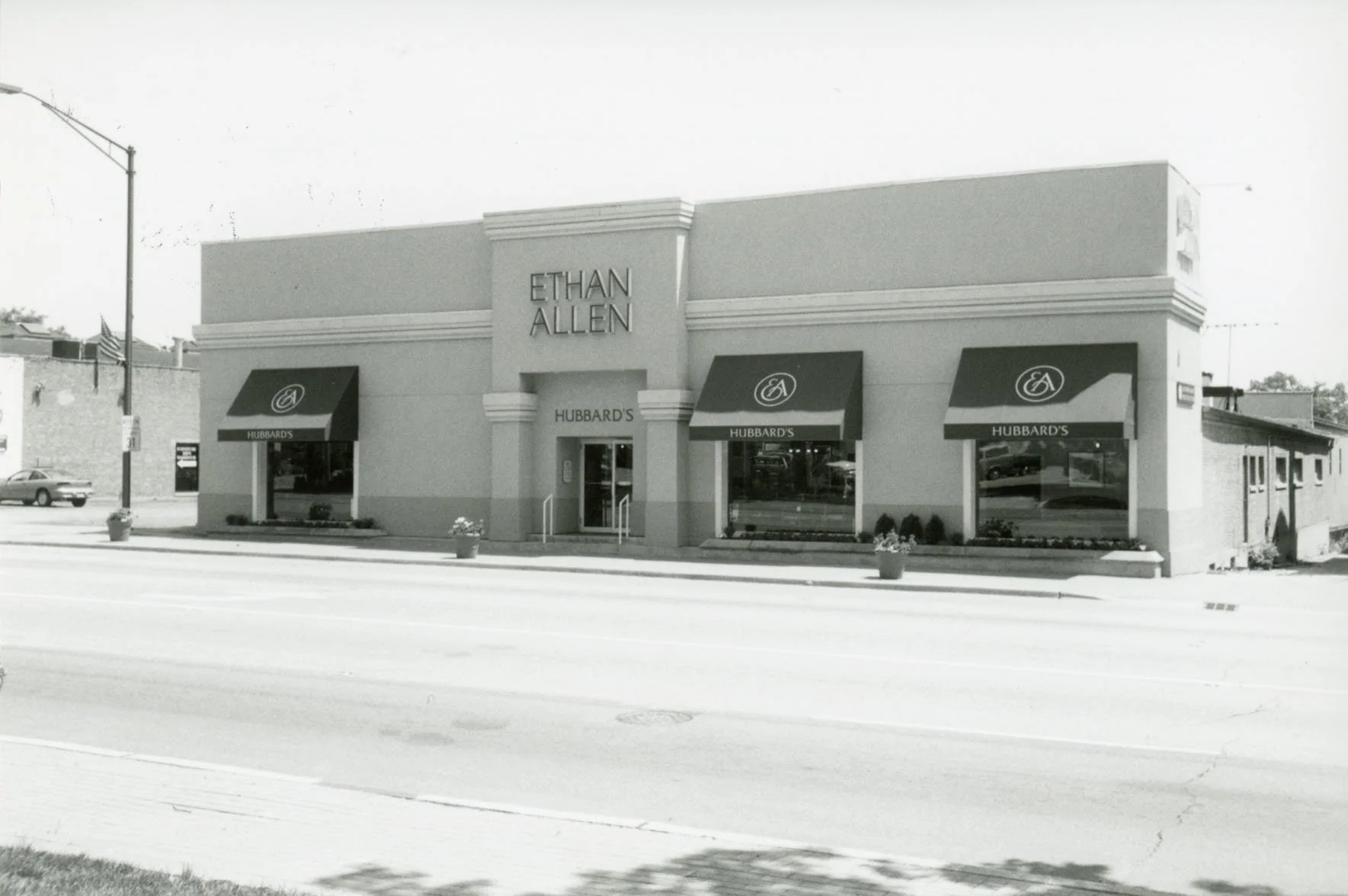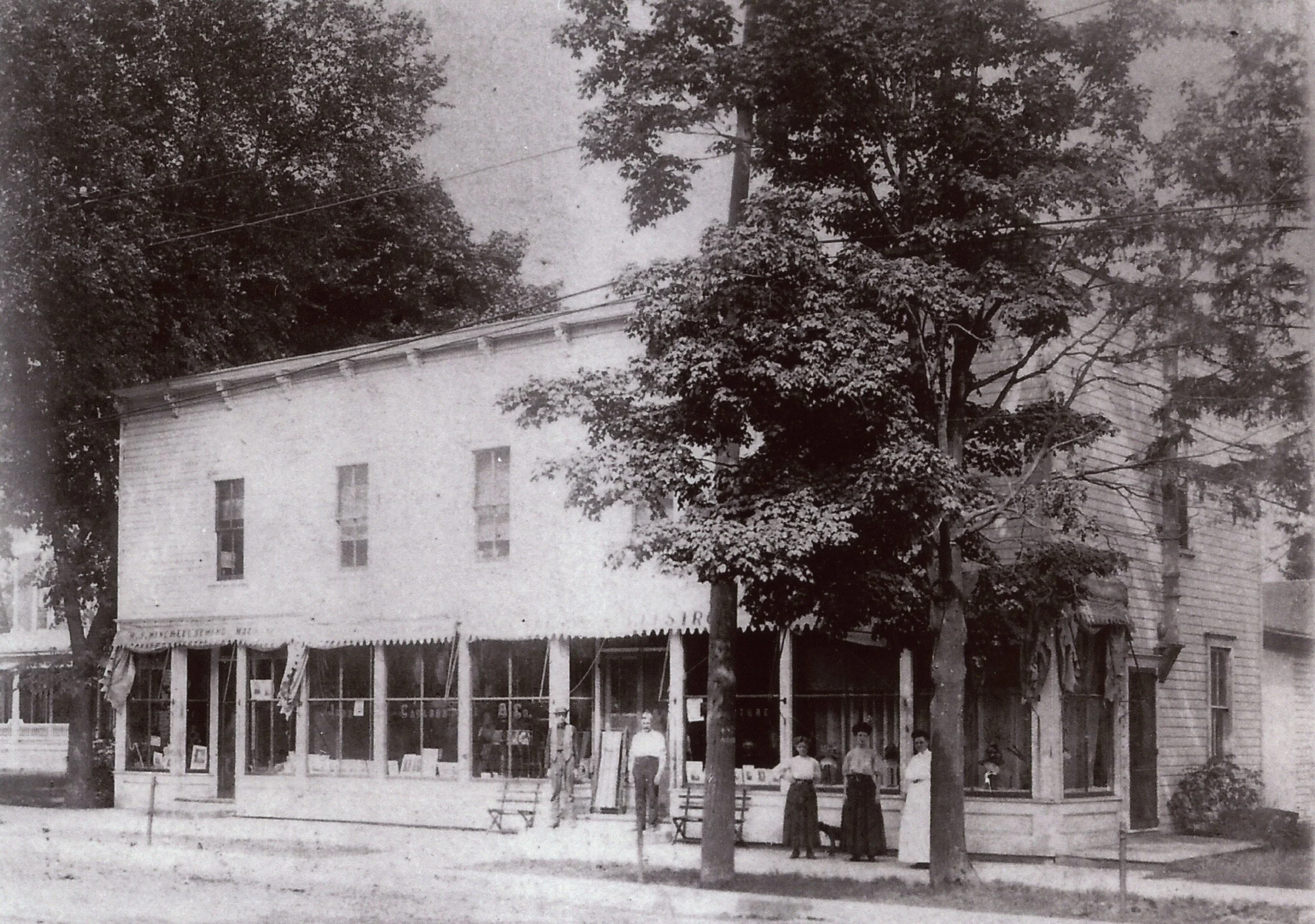Hubbard’s Home Furnishings, c. 1990. Provided courtesy of the Batavia Depot Museum.
Demolition is rarely the preferred option, but sometimes it is justifiable.
Hubbard’s Home Furnishings, c. 1900. Provided courtesy of the Batavia Depot Museum.
Buildings in local historic districts can be demolished, even those considered to be historically and architecturally significant. The historic preservation ordinances of St. Charles, Geneva, and Batavia have criteria that must be met to recommend demolition, to be sure. The criteria are not overly burdensome, although some property owners may disagree. If the application presented for demolition meets an ordinance’s requirement, the demolition should be approved.
Obviously, the point of having a historic district is to protect historic buildings; however, the ordinances recognize that every situation is different, and sometimes demolition is the right choice.
The former 1897 Hubbard’s Home Furnishings, located at 16 N. Batavia Ave. in Batavia, is a good case study of when demolition is justified.
The property has an interesting history (read about it here) and is situated prominently at the northern edge of the Batavia Historic District. Regrettably, significant alterations to the building over time have removed much of the former furniture store’s historic character. The “building” is a hodgepodge of six different structures added on at different elevations. Only one of the structures resembles its original use and is connected to a historically significant event. This structure was originally a gymnasium built behind the next-door Methodist Church and was later moved to the furniture store. The 1912 Batavia High School Boys Basketball team, which won the State Championship, played its home games in this gym.
The front façade, though, as clearly demonstrated by the photos above, does not resemble the original character of the building. Other than the former gym structure, the other additions seem to be architecturally unremarkable. In addition, the applicant noted that there was a high risk of fire within the building. Its proximity to the historically significant 1887 Batavia United Methodist Church could be disastrous if the former furniture store caught fire.
Batavia’s Historic Preservation Ordinance has four primary criteria for demolition and eight secondary criteria. A demolition application has to meet at least one of the primary criteria. In this case, the primary criterion “Preservation of the structure would cause an undue and unreasonable financial hardship to the owner…” (City of Batavia, IL Code of Ordinances, 12-6-3-D.1.c) was met. The multiple stairways throughout the many structures would make rehabilitation a complex challenge to meet today’s code requirements.
Secondary criteria such as “The effect on demolition on the surrounding buildings,” (City of Batavia, IL Code of Ordinances, 12-6-3-D.2.a) because of the fire risk to the church next door and “Whether the demolition will foster civic beauty…” (City of Batavia, IL Code of Ordinances, 12-6-3-D.2.f) because demolition will provide the public with a greater view of the much more attractive historic church, were met as well.
The reasons for demolition presented met the criteria for demolition according to the ordinance; therefore, recommending demolition, which the Batavia Historic Preservation Commission did on October 27, 2025, was justified.
In all likelihood, Batavia will benefit from the more attractive 1887 Methodist Church welcoming those entering downtown from the north and the additional space to serve the community when the church can add on in the years to come.
Thank you for reading! If this story interested, inspired, or informed you, please consider subscribing to our monthly e-newsletter so more of these stories come right to you!


